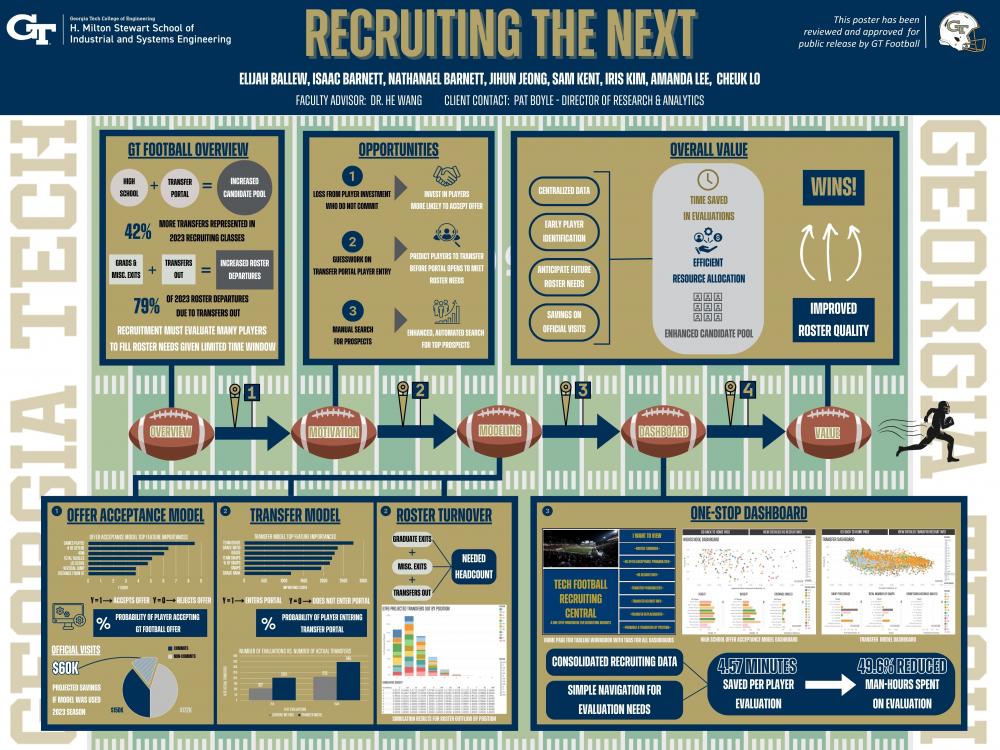Client Context
Georgia Tech Football is a Division-I football team that fields a roster of 85 scholarship athletes to compete for an Atlantic Coast Conference title. Established in 1892, the team has claimed 4 national titles and 16 conference titles and is looking to reclaim their historical success. At the end of each season, the team loses these scholarship players to various avenues, such as graduation, medical reasons, or the transfer portal.
Several factors in recent years have dramatically altered the course of collegiate recruiting. The most significant reasons being the establishment of the transfer portal and the National Collegiate Athletic Association ruling in 2023 on the unlimited number of official visits a player is allowed. As a southeastern team in a Power Five conference, Georgia Tech must compete with the nation’s top teams in recruiting quality talent, given their constraints of limited resources and staff numbers. Our project investigates these factors and how recruitment can evolve with the changing landscape to remain competitive in football.
Project Objective
Our project aims to reduce the loss from high-school player investment on players who do not commit to Georgia tech through investing in players who are more likely to accept a Georgia tech offer. We also hope to implement a machine learning model in place of guesswork to decide which collegiate players to evaluate before the transfer portal opens. Lastly, we hope to enhance the manual search for prospects through consolidating data into easy-to-use dashboards.
Design Strategy
Our design strategy focused on assisting the recruiting department in addressing roster overturn and began with two machine learning models. One using XGboost and focusing on predicting the likelihood of a high school player accepting a Georgia tech offer. The other using lightGBM and predicting the probability of a college player entering the transfer portal. The results from this transfer model were then applied to the Georgia Tech roster and entered into a monte-carlo simulation in order to show a distribution of roster overturn forecasts by position. Finally, the insights gained from these three pieces were combined into a one stop tableau portfolio with easy-to-use dashboards displaying important information.
Deliverables
There are four main deliverables for Georgia Tech that address the identified opportunities and motivations. The first is a high school offer acceptance model that aims to identify promising prospects to maximize commitments. The second deliverable is a transfer probability model that identifies transfer players early to increase roster quality. Third is a roster turnover forecast that predicts headcount distribution by position and season. The fourth deliverable is a one-stop Tableau dashboard that consolidates the insights from the first three deliverables as a decision-support tool.
Value and Impact
Through consolidation of recruiting data which will lead to time saved in evaluation, early player identification, the ability to anticipate future roster needs, and savings on official visits, we will provide more efficient resource allocation and ultimately improved recruiting classes which over time will lead to an improved roster quality. An improved roster quality is highly positively correlated with more wins. More wins would help Georgia tech sell more tickets, have improved relationships with alumni and donors, and increase rapport with prospective players.


